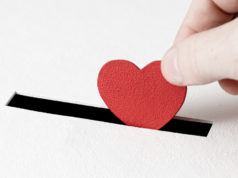
This field should never be confused with the illustration. It expresses a single artistic vision of an idea or atmosphere. Used in different industries, it shows a general design concept before all the details are added. Hence, this separate form of art requires special expertise.
Works of concept artists constitute an indispensable part of any franchise. If you are thinking of joining their ranks, begin with a concept art online course from https://motiondesign.school/products/in-depth-concept-art, which teaches the whole process of creation. Expensive entertainment projects go awry if the concept is flawed. This is true for movies, cartoons, video games, and comics. Therefore, talented specialists are in great demand.
What It Includes
These artists create a color palette and design elements for use in subsequent production. This provides a unified system for visual expression within a project. Such preparatory works may take the form of so-called ‘mood shots’ or detailed schemes of a character or object.
Behind every final image or scene, there could be dozens of concept images. These allow producers or project managers to see the bigger picture and minimize potential errors. Eventually, this saves time and money.
More Than Illustration
Despite the similarity of techniques, the two realms are not synonymous. The difference here lies in the word ‘concept’. Unlike a polished artwork, concept art completes the task of quick exploration and communication of ideas. It must offer something new in terms of:
- design,
- mood, and
- feel.
Otherwise, all the hours and effort will be wasted. Importantly, concept art may not always be polished. Sometimes, even a rough sketch is effective in sparking creativity and interest. Its artistic imperfections will be ignored.
Typical Sequence
Let’s look at the general process for a video game character. First, an artist creates multiple sketches. This introduces visibility early in the process. The team can define the basics of design for the entire project. The next stages include:
1. Establishing mass, mood, and palette.
Further on, this outcome serves as a guide for the whole process. At this point, the sketch is still rough. Its importance, however, is immense.
2. Adding color to the images
Based on the previous stage, the artist will now draw a clean sketch. There may be a lot of trials and iterations. This precedes detailing and rendering.
3. Working on lighting
For instance, if you have a character sitting on a bike, some of its details may be lost in the darkness. The character’s skin, meanwhile, could stand out thanks to a top-down street lamp. To make the separation between the background and the character more pronounced, artists may add rim lights from behind.

Overall, concept art is an organic part of the production process in the entertainment industry. Any blockbuster movie may have tens or hundreds of sketches behind every scene. This is, therefore, a repetitive yet indispensable process. Without concept art, even the most expensive projects are doomed.








